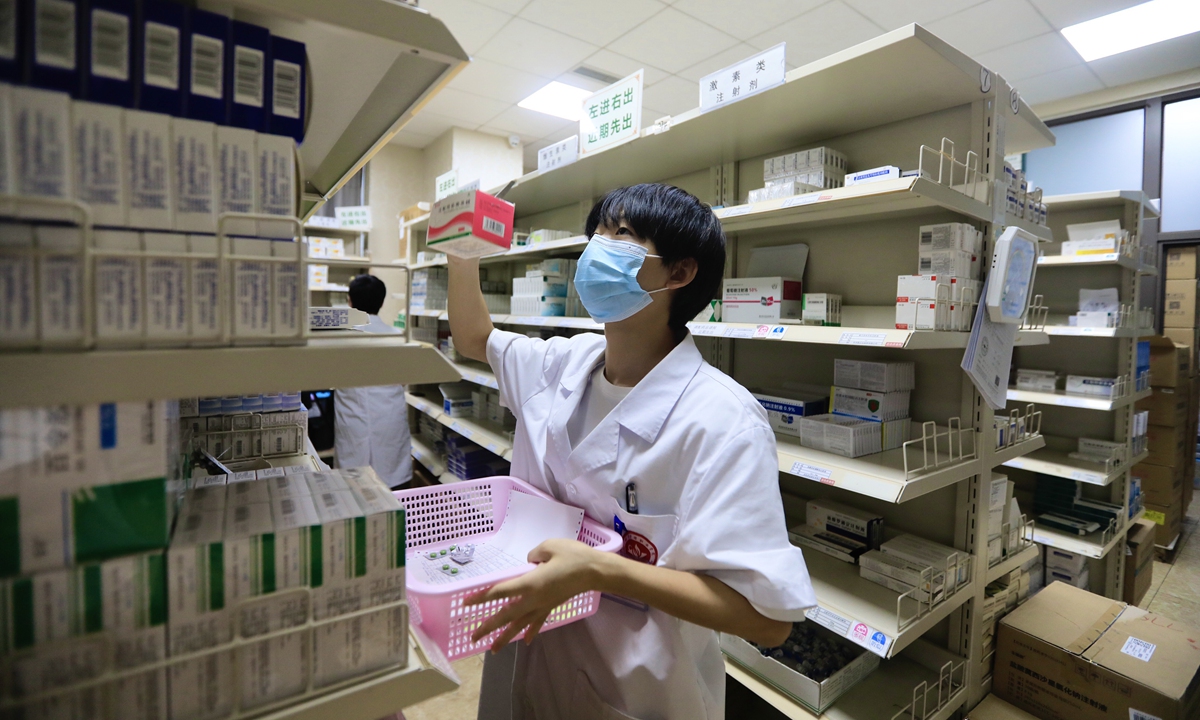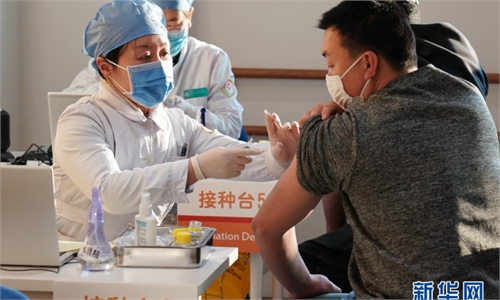
A medic group in Chengdu, Southwest China's Sichuan Province, help local residents in need to select drugs and deliver to their household amid a COVID flare-up on September 8, 2022. Photo: IC
Along with EG.5, a sublineage of the Omicron variant, being classified as a "variant of interest" by the World Health Organization (WHO), the topic of a third COVID-19 wave has triggered discussions among Chinese netizens in recent days with many sharing their infection experiences. Experts noted that the COVID-19 situation in China is still stable and that there is no need to panic.
Some netizens on Monday who said on social media that they had been reinfected a third time noted that their symptoms were lighter than previous infections. However, some shared different experiences.
The current COVID-19 infections are more hidden, but generally still at a relatively stable level. There isn't an obvious seasonal pattern for COVID-19 transmission, but usually it will show a small infection peak every five to six months. Generally, "the infection peak is decreasing, with no impact on the country's overall prevention work," Lu Hongzhou, head of the Third People's Hospital of Shenzhen, told the Global Times on Monday.
Generally speaking, fewer people have been infected for a third or more time in Shenzhen, South China's Guangdong Province, according to Lu.
Peng Jie, director of the Difficult Infectious Disease Center at Nanfang Hospital in Guangzhou, also in Guangdong, said since the peak reinfection wave in May, some patients who thought they had ordinary fevers only found out they had COVID-19 after nucleic acid testing. Among them, only a few were infected for the third time, and their symptoms are relatively light, said Peng, according to a report issued on the Guangdong authorities' WeChat account on Saturday.
National fever outpatient treatment and the number of severe COVID-19 cases have shown a fluctuating downward trend, according to the Chinese Center for Disease Control and Prevention (China CDC).
In July alone, the Chinese mainland reported 455 new serious cases of COVID-19, with 65 deaths. The patients had underlying health issues, and no one died of respiratory failure due to COVID-19, the China CDC said in its latest report issued on August 3. In June, the country reported 1,968 new serious cases, with 239 deaths, said the China CDC.
Based on the July data, the genome sequences of 9,591 local COVID-19 samples were all Omicron variant strains, covering 116 evolutionary branches, and the XBB variant strains were the main circulating ones, said the report released by the China CDC.
Due to the highly infectious nature of COVID-19 and the natural decrease in antibodies in individuals over time, basically most people can expect to be infected one to three times in a year. However, "for people with normal immune function, it will not have a significant impact on them," Lu explained.
As long as the COVID-19 mutation doesn't completely break away from the Omicron subbranch, an individual will have a cross-immune memory, so when an individual encounters the EG.5 COVID-19 strain, it will respond fast and produce antibodies, according to Lu.
EG.5 was first reported in February, and designated as a variant under monitoring in July, according to a report released by the WHO on August 9. There has been a steady increase in the proportion of EG.5 reported globally. From July 17 to 23, the global prevalence of EG.5 was 17.4 percent, a notable rise from the data reported in the week from June 19 to 25, when the global prevalence of EG.5 was 7.6 percent, according to the WHO.
Lu suggested people with underlying health issues receive COVID-19 vaccinations regularly, including nasal spray vaccines or other multivalent vaccine strategies.


